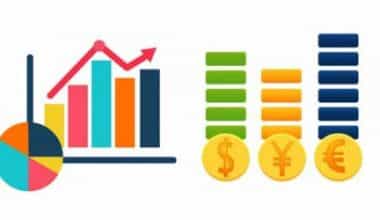A product backlog is one of the essential parts of the product development chain. A prioritized list of product features, and bug fixes that leads from the company’s and product’s vision through the execution. In essence, Product backlog management falls to the product manager, who has the key obligation to create, prioritize, and maintain it. Additionally, your product backlog example should be built on a tool that’s user-friendly, flexible enough to be customized and easily accessible especially in the cloud. Read on to learn about the difference between product backlog vs sprint backlog and its refinement.
Overview
A product backlog is the checklist of work used by software development teams to queue up desired features, bug fixes, and other technical tasks. In other words, it is a company development to-do list. The product backlog links back to a company’s product roadmap, which helps prioritize items and tasks at the top of the product backlog so the team knows what to deliver first. In addition to this, it is an effective way for the team to communicate what they are working on and plan to work on next. Briefly, let’s take a detailed look at how to create a product backlog,
Steps to Create a Product Backlog
A product backlog is more than a simple to-do list where you break down complicated tasks into a series of steps and entrust them to team members. Follow these steps to develop an effective product backlog,
#1. Add Ideas to Your Backlog
If a client comes to you with ideas for creating a new software solution or improving an existing one, consider adding these ideas to your backlog. Because adding them to your backlog can stimulate important conversations and help a team bring out solutions to fulfill the client’s request. Hence, including them helps you determine whether the update is achievable according to the project timeline and budget. Here are more potential sources of backlog ideas:
- A company’s quality assurance (QA) team
- Customer surveys on product features
- Product or service reviews
- Sales and marketing suggestions or requests
#2. Build a Product Roadmap
The product roadmap is the foundation for the product backlog. Your team should create a roadmap first, which will then serve as the action plan for how your product will change as it develops. The roadmap is the vision for long-term product development but it can also evolve.
#3. Checklist Product Backlog Items
With your product roadmap in mind, your team can begin listing product backlog items. These items should include both high-priority items and more abstract ideas. During this phase of product backlog creation, you’ll also need to communicate with stakeholders and listen to their ideas for product improvements.
#4. Focus On Your Backlog
After your team lists all the items, sort and prioritize your most important tasks by putting the customer in mind and considering what items provide the most value to them. After fully understanding the client’s request, consider categorizing the idea into individual and actionable tasks for the development team to complete in order of priority with the most critical tasks at the top of the backlog and the least critical tasks at the bottom.
#5. Update Regularly
As your team works through the product backlog, remember that it’s a living document where you need to continuously add items to the backlog, select and refine them as you work. Therefore, as the team completes tasks, it’s important to update to reflect these changes.
Example of Product Backlog
The product backlog is the most important artifact in any product development company. How should we structure this critical artifact? An example of a product backlog is an action item list related to product development that is used by product teams to plan, select, and manage tasks. For instance,
#1.Project
- Login page for clients’ final design
- Registration page for clients testing
- Creating a ticket build (including attaching docs and screenshots)
- Bugfix: auto-assigning of tickets to the support team leader
#2. Ratings
- As someone who successfully completed a Certification Course (becoming a Certified ScrumMaster or Certified Scrum Product Owner), I am emailed a link to a survey about the course and instructor, so I can provide feedback on the course.
- As a trainer, I want to be assured that no one can submit the same answers multiple times and skew my results, so my ratings are accurate.
- As a trainer, I am notified about the results of surveys about my classes, so I can read them. (Questions: After each survey? After a set period of time? Does the trainer get an email or just know to go to the site?)#3.membership
- As a site administrator, I can set the annual fees for members, Practitioners and Trainers so that fees can be set without involving a programmer.
- As someone whose membership (of any type) is about to expire, I am sent a reminder and a link so that I can renew.
- As a member with short-term memory problems, I can have the system email me a new password or a password reminder, possibly my username (unless we use email for that), and so
#4. Jobs
- As a site admin, I am emailed whenever a job is submitted so that I am aware of it and can decide if I want to post it.
- As a site member, I can subscribe to an RSS feed of jobs available so that I can read them without visiting the site.
- As a site admin, I can edit and delete help-wanted ads so I can correct small problems or make
#5. Course Completion
- As a participant, I am shown a page telling me how to get my PDUs after I complete the course so that I earn the credit I might have been interested in.
- As a participant, I can earn a certificate of completion by finishing a course so that I have proof that I completed a course.
- As a participant, I can earn a badge showing that I completed a course so that I can display that badge on my own website.
With the relevant example of product backlog in place, it is possible to do precise estimations on the workload and forecast what will be completed when with few deviations.
Product Backlog Refinement
Product Backlog refinement is the act of adding detail, estimates, and orders to items in the Product Backlog. Also, it is the process in which the Product owner and the development team collaborate, review, and revise the details of items about to be implemented. In essence, product backlog refinement is necessary as it makes the team familiar with the highest Priority Items. Let’s see how to operate a product backlog refinement effectively,
How to Effectively Run a Product Backlog Refinement Session
Here are some best refinement practices that will help make your backlog refinement session more effective.
#1. Make It Deep
A well-managed backlog should be DE’EP, which is an acronym for detailed appropriately, estimated, emergent, and prioritized.
- Being detailed appropriately means that items with higher priority should have a higher level of detail than low-priority items.
- Estimated means you should have a good idea of the time and resources required to implement each backlog item.
- Emergent means that the backlog is a live document that should be updated regularly.
- The backlog items should be arranged in order of priority.
#2. Keep Customers in Mind
Every decision made during the backlog refinement meeting should be based on customer needs. After all, if the product doesn’t work for your customers, nothing else matters. The team will discuss the user stories openly to exchange ideas and finally get a common understanding. Additionally, It’s recommended to document your discussions and thoughts so the PO can review them afterward and make a summary.
#3. Identify Dependencies
Sometimes, certain backlog items cannot be implemented until another item has been started or completed. Failure to identify these dependencies can lead to delayed progress down the line. Therefore, it’s good to identify these dependencies early and plan for them.
#4. Follow-up after the Meeting
Once the meeting is over, follow up with all the attendees and share the minutes of the meeting with them. This helps keep everyone on the same page and ensures that they are aware of the next steps. Also, if some user stories lack information, continue doing more research and add details for the next grooming meeting.
Product Backlog Management
Product backlog management is when the product owner makes additions, adjusts, improves, and prioritizes the backlog items to ensure that customers receive only the best and most valuable product. Therefore, it is essentially a list of prioritized tasks that need to be done. If any task is amiss from the list, then the job is not counted to be done.
Thus, product backlog management serves as a great starting point for sprint planning and development of the team to identify the tasks that could potentially be a part of the sprint. So, to ensure accuracy and transparency, the product backlog must be up-to-date through backlog refinement. Below are tips for a product management team,
#1. Start with a Product Strategy
Proper backlog management starts with a clearly written and articulated product strategy. Before you dive into managing a product backlog, ensure that you have defined and validated the product strategy. To achieve your vision, you must first have a well-defined product strategy.
#2. Set the Backlog Preferences Right
Prioritizing the tasks in your backlog is a key aspect. Aligned with the KPIs and product vision, your backlog prioritization must be clear and transparent. Use prioritization frameworks and procedures to help you keep your ideas in order and plan iterations easily.and user feedback can help you do that, by understanding which initiatives matter most to your customers.
#3. Cooperate
Let the product managers and the development team collaborate to ensure proper backlog management. Get both teams in backlog-related discussions to discover the technical risks and dependencies better. Also, every product team member will have valuable feedback, so use these meetings to discuss how to prioritize the backlog to increase understanding and buy-in. This will lead to a clear understanding across the team of what has been prioritized and why.
#4. Employ the Word ‘No’ Diplomatically
One of a product manager’s challenges is that they can feel pressured to accept every request from stakeholders and team members but the goal is to delight your customers, not to fulfill every request or say ‘yes’ to every idea. Drive results and efficiencies (not to mention profitability) by saying ‘no’ more frequently. It’s important not to become an internal blocker and remain open to new requests, but saying ‘no’ helps you prioritize without distraction.
#5. Keep Stakeholders Updated
Share transparent updates with stakeholders to communicate the current status of your backlog. Updates could take the form of giving stakeholders access to a live dashboard featuring an up-to-date picture of your backlog.
Or it could be a regular email bulletin to relevant people in the company, featuring just a snapshot of the dashboard. Maintain transparency with the stakeholders when it comes to the product backlog. Let your stakeholders know the current status, get the latest updates, and offer useful feedback.
Sprint Backlog vs Product Backlog
Sprint backlogs and product backlogs are very similar in terms of their components. But, a sprint backlog is a list of work items your team plans to complete during a project sprint usually pulled from the product backlog during the sprint planning session. Hence, a clear sprint backlog prevents scope creep by clarifying exactly what your team will be doing and not doing during each sprint. Now we will take a look at the difference between sprint backlog vs product backlog,
Firstly, the product backlog contains the complete list of upcoming items for a product’s lifecycle, while the sprint backlog focuses on what’s needed to achieve individual sprint goals. Therefore, each item that is taken from the product backlog to form the sprint backlog must be related to the success of that specific sprint goal.
Secondly, the product backlog tracks how the product team works depending on the size of your organization, you may have one central product backlog or multiple for different teams. Also, the product owner will refine the product backlog periodically to make sure the most important initiatives are at the top and each initiative has all of the information needed to execute against it. While a sprint backlog is a subset of the product backlog and lists the work items to complete in one specific sprint.
In addition to that, both product backlog vs sprint backlog are essential for keeping the entire product development process transparent. They provide a clear view of the ongoing work progress and future plans as well.
What Is a Product Backlog in Scrum?
In the easiest definition, the Scrum Product Backlog is simply a list of all things that need to be done within the project. It replaces the traditional requirements specification artifacts. These items can have a technical nature or can be user-centric e.g. in the form of user stories. The owner of Scrum is the Scrum Product Owner. The Scrum Master, the Scrum Team, and other Stakeholders contribute to having a broad and complete To-Do list. When applying Scrum, it’s not necessary to start a project with a lengthy, upfront effort to document all requirements.
In a Nutshell
A product backlog is an ordered list of tasks, features, or items to be completed as part of a larger product roadmap. With the above-listed guidelines, I believe you will now be able to create effective management, you can assign developers daily, weekly, or monthly tasks that target your end goals and help you build a better product.
References
- Asana.
- Indeed.
- .mountaingoatsoftware
- .airgram.
Related Articles
- WHAT IS SCRUM: Definition, Principles, and Purpose
- AGILE PROJECT MANAGEMENT TOOLS: Definition, Uses, And List of APM
- Project Management Tools: Best 25+Tools and Techniques
- Work Order: Simple Procedure/ Steps for Creating a Work Order
- PRODUCT ROADMAP: Meaning, Example, How To Create It, Software & Strategy
- BUSINESS TRANSFORMATION: Definition, process, strategies, agencies & model






